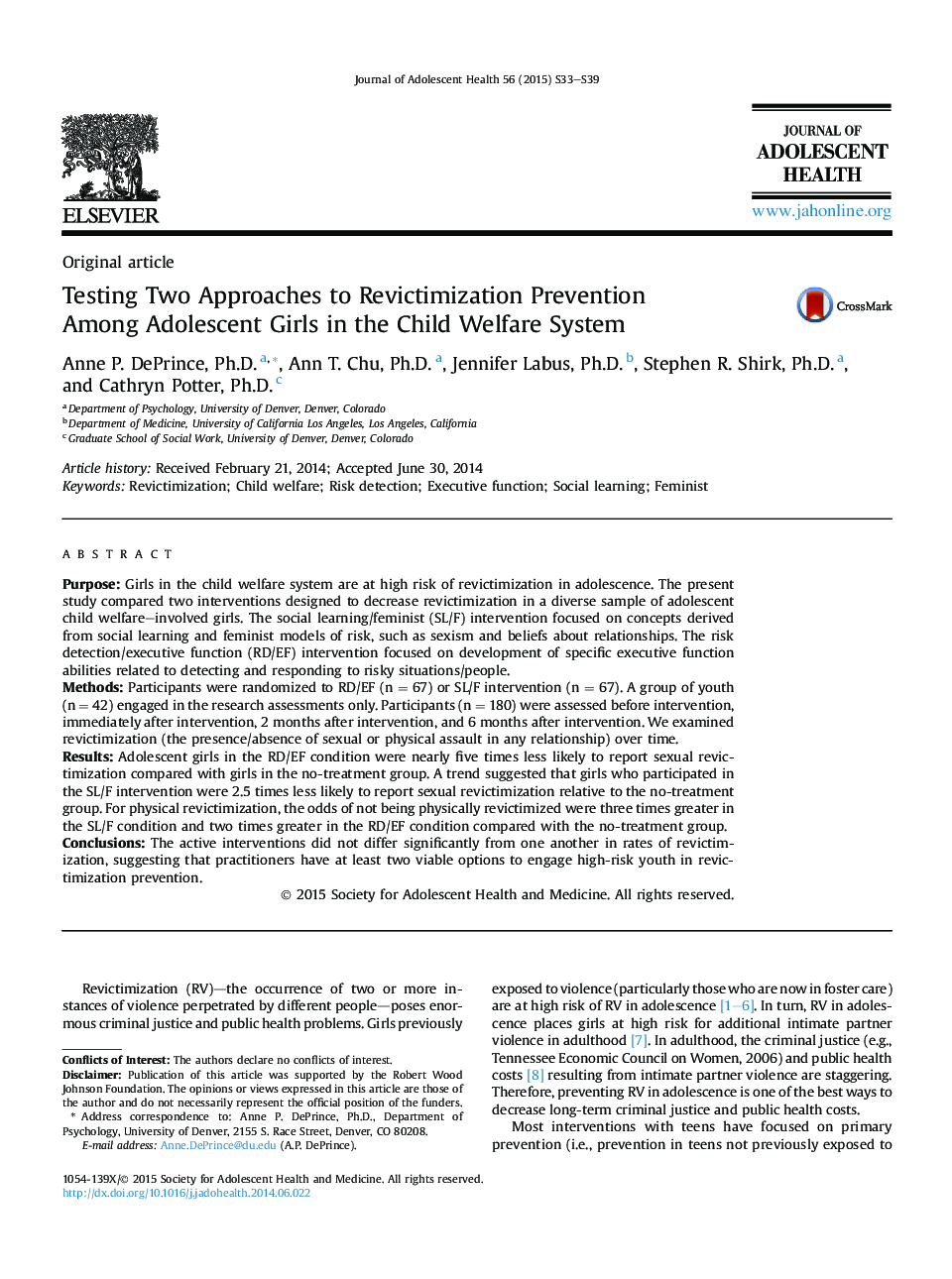| کد مقاله | کد نشریه | سال انتشار | مقاله انگلیسی | نسخه تمام متن |
|---|---|---|---|---|
| 1078476 | 950457 | 2015 | 7 صفحه PDF | دانلود رایگان |
PurposeGirls in the child welfare system are at high risk of revictimization in adolescence. The present study compared two interventions designed to decrease revictimization in a diverse sample of adolescent child welfare–involved girls. The social learning/feminist (SL/F) intervention focused on concepts derived from social learning and feminist models of risk, such as sexism and beliefs about relationships. The risk detection/executive function (RD/EF) intervention focused on development of specific executive function abilities related to detecting and responding to risky situations/people.MethodsParticipants were randomized to RD/EF (n = 67) or SL/F intervention (n = 67). A group of youth (n = 42) engaged in the research assessments only. Participants (n = 180) were assessed before intervention, immediately after intervention, 2 months after intervention, and 6 months after intervention. We examined revictimization (the presence/absence of sexual or physical assault in any relationship) over time.ResultsAdolescent girls in the RD/EF condition were nearly five times less likely to report sexual revictimization compared with girls in the no-treatment group. A trend suggested that girls who participated in the SL/F intervention were 2.5 times less likely to report sexual revictimization relative to the no-treatment group. For physical revictimization, the odds of not being physically revictimized were three times greater in the SL/F condition and two times greater in the RD/EF condition compared with the no-treatment group.ConclusionsThe active interventions did not differ significantly from one another in rates of revictimization, suggesting that practitioners have at least two viable options to engage high-risk youth in revictimization prevention.
Journal: Journal of Adolescent Health - Volume 56, Issue 2, Supplement 2, February 2015, Pages S33–S39
